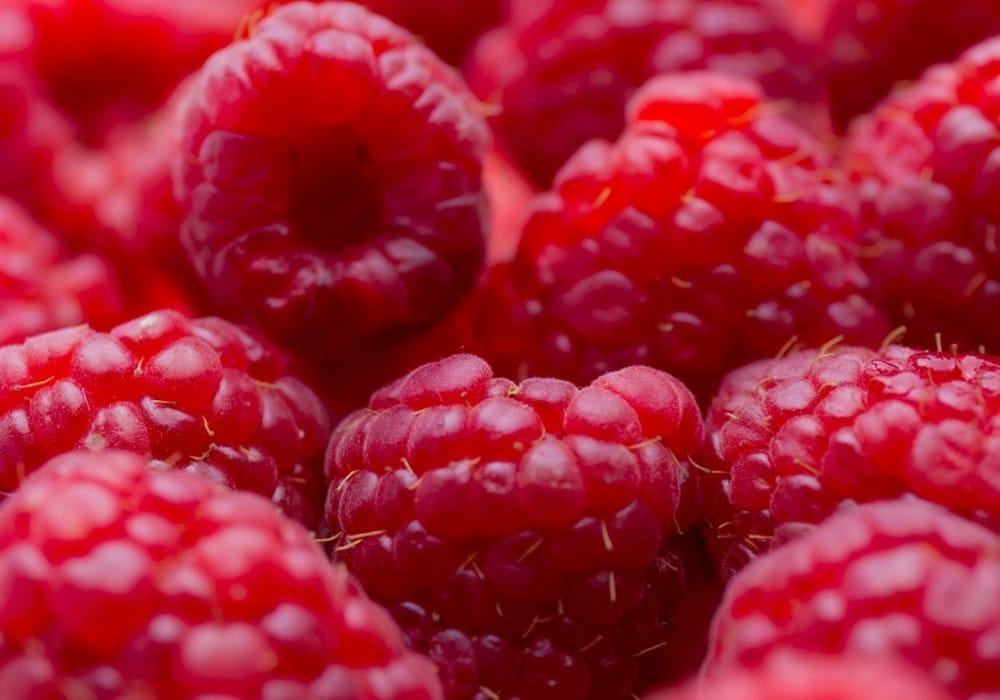What Bees Can Teach Us About High Frequency Food
Eating high vibration food is about more than consulting a list. Here's a more in-depth look at what creates the vibration of food.

For an audio version of this article click here
For my website and vibrational consulting services click here
Robobees
Spoiler alert. We are losing a lot of bees. Enough that trucking them around the US to pollinate crops isn’t meeting demand. Robobees are now being tested to see if they can stack up to their conscious counterparts for crop pollination.
I have to say, I admire the ingenuity behind the robobee design. They have little polyester wings, and can swim.
Imagine a world of indoor urban vertical farms pollinated by robobees. Kinda cool right? Progressive. In a way, I give props to this idea.
Yet, imagining a world where a small drone of a bee comes and “dies” on your deck with a clink feels like kind of a sad reality.
Especially because you are more sensitive to the frequency of food than you realize.
Imagine being in a farmer’s field, sun on your face, surrounded by bees and a soft breeze.
Then step into the indoor urban farm with artificial lighting, AI powered robot bees and electric fans. Intuitively, which one would you rather eat food from?
Our bodies are set to naturally sense and seek out high vibration food options.
We’ve just become so disconnected from this ability under the fluorescent lights of a grocery store that we forget we have this superpower, until given a choice.
The fact that a room of real bees creates a frequency (250-300hz) more than double robot bees (120hz), or that sunlight oscillates in cycles of 400-700 trillion cycles per second, while artificial light is 50-120 cycles per second, doesn’t even need to enter your consciousness when making the choice.
I suspect this is why out of season tomatoes grown in greenhouses suck. They grew in a vibrational space with only a fraction of the vibrational love afforded to their outdoor counterparts.
We just call food like that bland. Yet, we could also call it low vibration.
Nutrition is Not the Only Thing We Get From Food
When you eat, you’re eating the humming vibration of nature, the frequency of sunshine, the innate wisdom of the natural world. The indoor lettuce is by comparison… dumb.
A blank slate.
We eat for vibration the same way we eat for antioxidants and nutrients. We just don’t usually think of it that way, much less shop for food that way.
Whether water holds vibratory memories is still controversial.
Some argue our cells are receiving vibratory messages and imprints of the world around us coded into the structured water in our food. The water in the food speaks to the water in our cells- and tells them a story of the outside environment.
It’s all incredibly interesting to me. If you’d like to form an opinion for yourself, Luke Storey has interviewed a wide range of interesting guests about water on his podcast, and it’s an enjoyable place to start.
So while there is certainly upside potential to growing more food inside with robot bees, there’s also a vibratory downside we likely cannot fully calculate.
Some of us will choose to make the trade, and others may prefer not to. It’s just important for people to know when there is a trade to be made.
As my former tech mentor used to say, “Don’t tell me what you’ve gained until you tell me what you’ve lost to gain it.”

Only Eat Avocados for the Rest of Your Life
One of the reasons we are losing so many bees right now is monocropping. Bees only fly about four miles from their hive, so just finding wheat fields is to them, like asking you to only eat avocados for the rest of your life.
Ironically, our drive for food efficiency is partially to blame for killing off the very species we need to pollinate it, and creating lower vibration food environments in the process.
Farmers have to use more pesticides for monocropping, compared to food grown using crop rotation. The monocropped food will cost less, but pesticides significantly lower the vibration.
To create a beautiful humming vibration for high frequency food to take root, nature craves diversity. I can’t measure how much of a difference it makes, but corn coming from a vast field of miles and miles of corn is unlikely to have the same vibration as corn grown next to squash and flowers and zucchini.
It’s probably like being part of a kindergarten class where everyone has the exact same personality.
Interestingly, another reason we need robot bees is real bees avoid the artificial light we use to grow food indoors. Think about that for second. It messes up their circadian rhythms, activity patterns and communication.
I have to wonder about the impact on us if we not only sit under artificial light in our homes and offices daily, but let more and more of our diet consist of food grown under low vibration light.
It’s a total 180 to our ancestors living and gardening outside, and I don’t think that’s without cost. Especially if bees are already giving these lights a hard pass.
Sweet as Artificial Honey
I recently fell down a honey rabbit hole, and came across a Vice article where a class action lawsuit found 70% of honey tested (from 110 samples) was adulterated.
Even honey from Whole Foods, Kroger, a farmer’s market, and True Source Certified honey wasn’t exempt from eyebrow raising results. WTF.
Adulterated results ranged from product claiming to be local Tennessee Sourwood honey actually being from Vietnam, honey claiming to be raw being heated, and honey with cheap sugar syrups added to increase margin- to the point of being “syrup with a pinch of honey.”
Honey fraud is a thing. Apparently there’s a lot of money to be made in honey.
I don’t envy the pressure on companies to increase profits every year. It must feel relentless at times. At a certain point where do you go? I guess for some the answer is fraud.
With the majority of our food system leaving the hands of independent companies and farmers, and entering the arms of huge multinational food production companies, that relentless need for profit is likely to diminish the vibratory quality of our food in search of margin.
Ironically, some of the same people who’d like higher quality food may be investing in these companies in the stock market- wanting to see that pretty chart keep going up and to the right. It can get rather convoluted.

This honey rabbit hole made me realize that, for me, part of high frequency food is about taking a little time to research which companies I want to mingle my personal frequency with by supporting them- because the larger market is looking a bit sketchy.
I see misleading statements on way more than honey labels.
However, doing this for everything we buy is idealistic at best. We’re all super busy, and taking time to research every company we buy food from is absurd.
I decided to start with choosing a couple products I repeatedly buy, and finding businesses I want to support. Companies that could even rub off a little of their high frequency on me when we mix.
For more on other things in life that affect our frequency when we mix with them, bounce to this article on things that influence our vibrational frequency.
Keep Coffee from Becoming a Fancy Gift
As part of my aforementioned quest for higher vibration food I started searching for a local farm to support with my honey dollars. Yet, as I was looking around I started getting a prickling sensation as I realized there weren’t that many local beekeepers left.
Like realizing something may have disappeared before I even had time to appreciate it.
U.S. beekeepers apparently lost 48% of their bee colonies in 2022-2023. That statistic is even more staggering than learning about all that fake honey.
In addition to the monocropping mentioned above, another reason is if bees don’t die from pesticide exposure on the spot, they can bring it back to the hive where it reaches critical levels in beeswax. If our current farming system is partially to blame for killing smaller members of the ecosystem, what’s it doing to us on a vibratory level?
Additionally, I became concerned wondering, “If bees go extinct, do we go extinct?”
Answer is it’s unlikely, but we’d be eating a lot of grains. Many foods from avocados to almonds, berries and more would become scarce, and thus make exciting Christmas gifts in a bee-less future. We’d still have coffee, but it would become “expensive and rare.”
So whatever changes you may ponder making after reading this article, even if you don’t want to do it for vibration or bees… do it for your coffee.
Part of a High Vibration Life is Syncing Up With Cycles
Did you know honey was seasonal?? Neither did I.
It’s harvested in June after the bees pollinate spring flowers, and is ready for sale in July. I was such a city girl I had no idea.
Yes, it’s a luxury to eat oranges whenever we want; I’m glad it’s not 1860. However, this luxury of abundance also scatters the ability of food to be our medicine. Produce hits its vibratory and nutritional peak simultaneously during its season.
This coincides with when our bodies need the nutrients in these foods the most. Allowing this natural pairing is making a high vibration food choice.
Yet we often see skirting this natural logic as something we’re lucky to have figured out a way around.
Seasonality is nature’s way of literally handing us the highest vibration food available at the time. Many veggies are high vibration, but if we are eating them off-season from a freezer bag we drop onto our counter with a thunk, this is low vibration food.

The Many Frequencies of Honey
When I was researching a resource to recommend to you on the vibratory memory of water I watched part of a documentary about Nobel Prize winner Luc Montagnier who was studying the topic. What caught my eye was the top comment:
“As a beekeeper I can see why honey is considered to have many healing properties. It’s in the liquid properties of the honey which hold the frequency of all the sap from every plant the bee visits. Research with honey frequencies I think would be very interesting.”
If we measured a bunch of different honey I bet we would find it to have different frequencies.
This is where it’s hard to quantify high frequency food just based on a list.
Discernment is needed to determine if a food should be considered high vibration or not.
In my next article on high vibration food I’ll examine a bunch of elements for you to consider when making this decision, and it would be wonderful to see you again.
If you’d like to keep reading about the vibration of food, check out my first article on the topic which covers a lot of food frequency basics.

